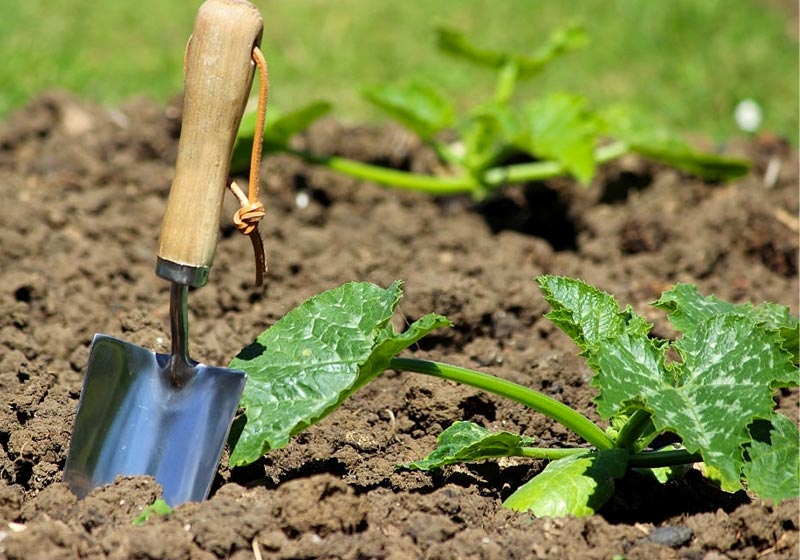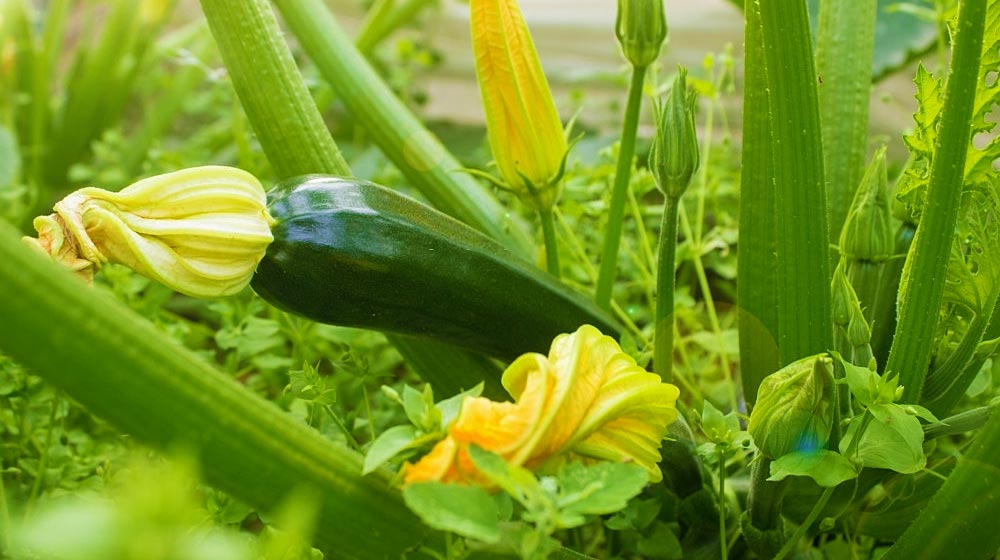You might have heard that growing zucchini is one of the easiest things to accomplish in your garden. Most of the time, this summer squash can grow and thrive with little gardener’s intervention.
However, you need to learn a thing or two about this summer vegetable in order to make them last longer and amplify your garden use in the process.
RELATED: Easy Cucumber Growing At Home
In this article:
Growing Zucchini the Proper Way
When to Plant Zucchini
[instagram url=https://www.instagram.com/p/CBk-bi0AL3Y/ hidecaption=true width=800]
Zucchini belongs to the Summer squash family. That’s why they should be planted when the soil’s temperature reaches at least 65°F – the warmer, the better. Make sure you plant zucchini after all the danger of frost has disappeared.
If there’s one thing that zucchinis cannot tolerate, it’s the cold or frost. Even if you can successfully grow the plant early, the fruits are more likely to develop pitted skin as a result of chills.
Moreover, waiting for the soil to warm up will help you avoid pests and diseases.
Step 1. Prepare the Planting Site
[instagram url=https://www.instagram.com/p/CBS51Apgee-/ hidecaption=true width=800]
Start with picking a location in your garden with full sun (at least 6-8 hours every day). Although they can definitely tolerate partial shade, your zucchini’s growth won’t be as optimum as possible.
Another consideration in selecting a spot for planting is the exposure to the wind that could affect pollination. Balance this with the need for good airflow. Remember, zucchini squash is susceptible to mildew. What you can do to promote airflow is to plan your plant spacing.
Prepare well-draining soil by adding a healthy amount of organic compost or animal manure. Zucchini, like all Summer squash plants, are heavy feeders.
A good technique is to make planting pockets 2 weeks before sowing the seeds. Dig out a hole, dump loads of compost and organic fertilizer, then top up with some soil.
Step 2. Sow the Seeds

Plants seeds directly into the ground. Sow 2 or 3 seeds in a hole about 1 inch deep. The holes should be 1-2 feet apart from each other. Water thoroughly after covering the seeds with soil.
When the seedlings grow, select and snip-off the weaker seedlings and leave the strongest one.
A more popular option is to plant a “hill” of zucchini seeds sown close together on a small mound. Keep 5 to 6 feet distance between hills. Planting in this way will improve the chance of pollination and therefore more harvest.
If you prefer starting your seedlings indoors, start 2-3 weeks before planting outside. Fill small trays with potting mix and sow 1 seed per tray. Once the seeds germinate, harden them by putting the trays outside initially for a short period of time, then increasing the length of time. Transplant to the ground when dangers of frost have passed.
RELATED: How To Create Your Own Survival Garden
Step 3. Grow the Zucchini Plant
[instagram url=https://www.instagram.com/p/CBkVFTEAe_u/ hidecaption=true width=800]
As mentioned, you can leave the plants be and it will probably grow just fine. However, we want to make sure that we are setting up the best conditions for the zucchini to grow. Here are some tips on how to grow zucchini properly.
- Mulch around the plant to help retain moisture and maintain a consistent warm temperature, while keeping the weeds from growing.
- Apply a side dressing of slow-release fertilizer when the first flowers appear.
- Water deep, at least 1 inch per week. When the weather becomes extremely hot, check for soil moisture up to 4 inches deep. Double the watering time when fruits start to appear.
- When watering, avoid wetting the leaves as this could result in white powdery mildews.
- If after the flowers appear and you don’t see fruits, you can self-pollinate. Using a Q-tip or toothbrush, brush off some pollen from male flowers. Dust off the pollens inside the female flowers.
- Light pruning can help the plant focus on producing fruits rather than growing thick foliage. Moreso, with fewer leaves, bees and other pollinators can easily access the flowers.
- When pruning, use a sterile shear to avoid the development of fungus and diseases. Cut the stems to make sure the hollow part is gone as well.
- You can put a stake right next to the main stem to hold the plant upright. This also helps keep good airflow.
- When powdery mildew develops, don’t fret too much. Most of the time, the plant can cope. If you want, you can use neem oil to slow down the progression.
Step 4. Harvest and Store Zucchini Squash
@kingsapron
It usually takes 45-60 days to begin harvesting zucchini fruits. It’s best to harvest them young when they’re still tender and more flavorful. Allow only to grow older fruits if you are harvesting for seeds. But if not, harvest them early on.
Use either a knife or pruning shears to cut about an inch away from the tip of the fruit, if possible. You can store directly without washing. If the fruits are soiled, dust off and rinse the harvested fruit. Let dry.
They can last for up to a week but it’s better to eat them fresh. If you want continued supplies of fresh harvest for a longer period of time, cut them into slices and freeze. These can last up to 4-6 months.
You can also do succession planting to extend your harvest season.
Growing Zucchini in Container
@easytigerplants
It’s possible to also grow zucchini in pot or raised bed container garden. What you need to plan is the space the plant will take up as it grows. With wide leaves, the plant’s width can reach up to 2 feet.
Watch this video from Gary Pilarchik on how to plant zucchini and other vegetables in large containers:
Zucchinis are one of the easiest plants to grow and propagate. It’s a hardy summer vegetable that can thrive in various conditions. It’s a good addition to your kitchen recipes. Knowing the requirements for growing zucchini squash successfully is helpful in growing other types of summer squash.
With a short period to maturity, you can start planting now and have a bountiful harvest ready for National Sneak a Zucchini onto Your Neighbor’s Porch Day on August 8th!
Aside from growing zucchini, what other summer squash varieties do you want to plant in your backyard garden? Let us know in the comments section below.
Up Next:
- 25 Perfect Summer Garden Crops For A Bountiful Harvest
- How To Grow Southern Peas The Right Way | Garden Season Guide
- 25 Recycled Planters For Your Container Garden
Calling all green thumbs, Garden Season needs YOU! Click here if you want to contribute for us!
Want to stay up to date? Follow Garden Season on Facebook, Twitter, Instagram, and Pinterest.



